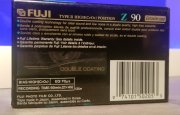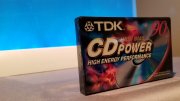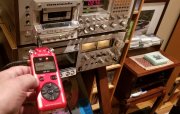Hi everyone, I’ve been doing a lot of cassette recording on my home stereo lately. I usually make recordings from Tidal either CD quality or hi-res, I don’t really buy into the high resolution music thing, I think that CD quality is about as good as I can hear, but I do like the fact that my Topping D50III DAC let me know if it’s high resolution or not. I feed that through an optical cable with the Wiim mini. Going through my Marantz 2385 receiver, or directly into my A&D GX-Z9100 just back from service, speakers are a nice pair of original Klipsch Forte 1’s with Crites Audio crossovers. I’ve had other gear, including lower end Wilson speakers and super high wattage amplifiers, separate everything, but this is where I ended up after downsizing and I’m very happy. With the right cassette it’s pretty indistinguishable between source and tape, except in between songs you can hear the hiss of course. I use Dolby HX PRO for recording, but I do not care for any type of noise reduction, that’s just personal preference.
So… I was always a big Maxell XL II fan, and when I was younger I pretty much used exclusively those tapes, although I didn’t have the kind of deck that I do now, and mostly played them through a Craig power play cassette deck in my car. Who remembers those? They were a high-powered deck that blinked power-play when you cranked it up lol.
Recently I acquired a bunch of used mid 80s chrome Maxells, and I’ve just gotten around to putting some recordings on them. Here’s what I want to talk about, the fact that I think them being recorded on once or twice doesn’t really have any effect on sound, but the way they are stored, and how they’ve aged definitely is a factor. These are the crayon smelling chromes, whether they are pure chrome or not I do not know. They don’t seem to age well, I’m having a hard time biasing them, and although they sound good to my ears, it’s always in the back of my head about the tape itself degrading. These are from a couple of different batches, and purchased at different times, but all have been bought within the last three years.
As far as true chrome tapes go it seems that in my experience, the BASF super chromes seem to age better, I have less trouble biasing them, and they also sound outstanding. The Denon HD8 chrome seems a little harder to bias on my machine, and I’m not so sure that the ones that I have are very stable, although they sound very good. So far the Maxell and BASF chromes sound better, even though as I stated above I think the Maxell tapes are degrading somewhat. There is also a faint crayon smell from a Sony UX tape from the later 90s that I’m using right now and I’ll tell you what, it sounds very very good even after what I read online about the later Sony tapes. It biased perfectly, almost right on the center detents of the bias and level controls.
I believe the Sony UX which is 12 to 15 years newer than the other tapes I’ve used, sounds so good because it is less degraded because of age. I know some people swear by Sony tapes, and they were just not as plentiful when I was younger, so I always went with what I saw for sale. Maxells where huge in the US from around 1979 on, and TDK the same to some extent.
What are you all think about my thoughts on cassette tapes degrading, and the later ones sounding better because they have not degraded as much?
Or;
Is that Sony UX tape just on par with the other chromes? Like I said it does have a faint crayon smell, so I’m assuming there’s some chrome in there.
I also have some mid to later 90’s (used and sealed) Maxell XL II tapes that are definitely not pure chrome, and they also sound very good and bias much easier.
Last edited:







